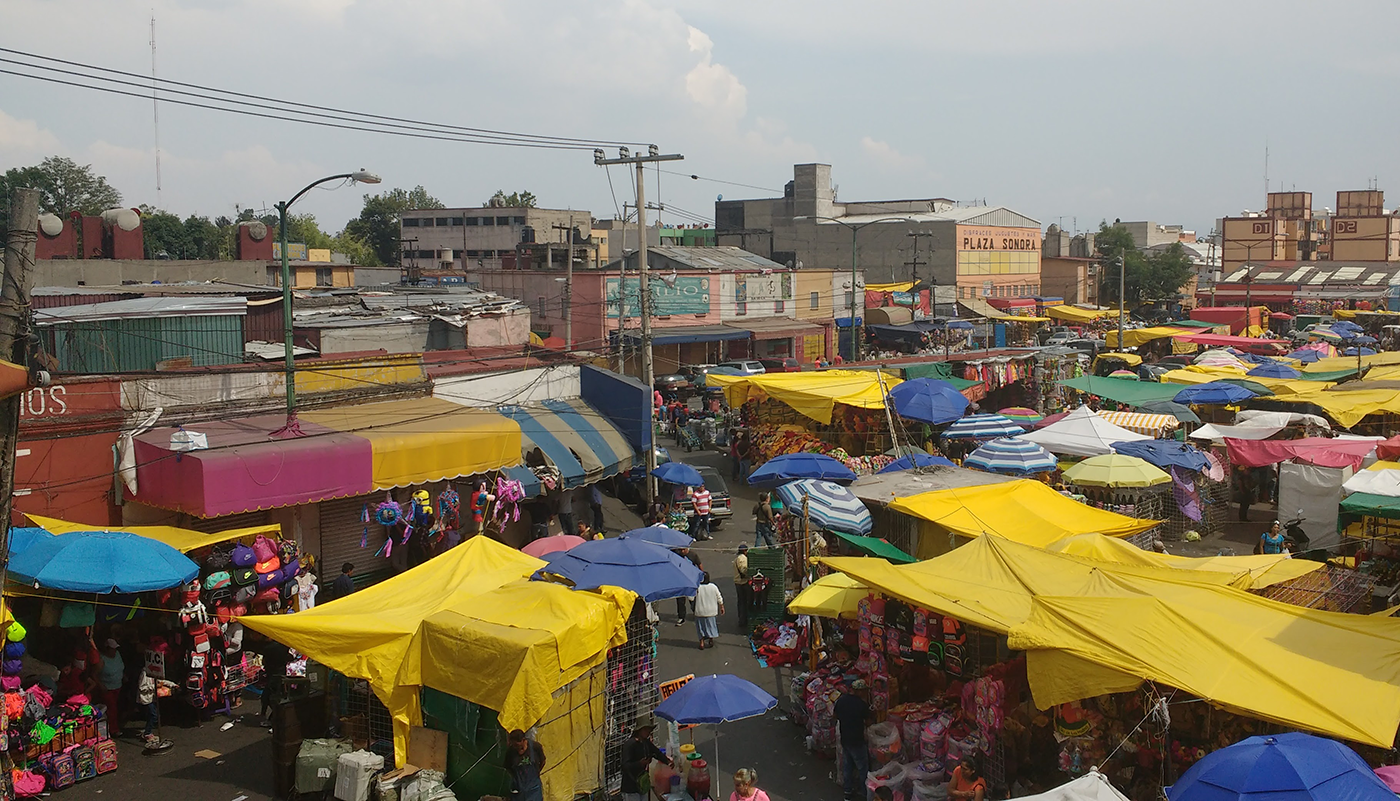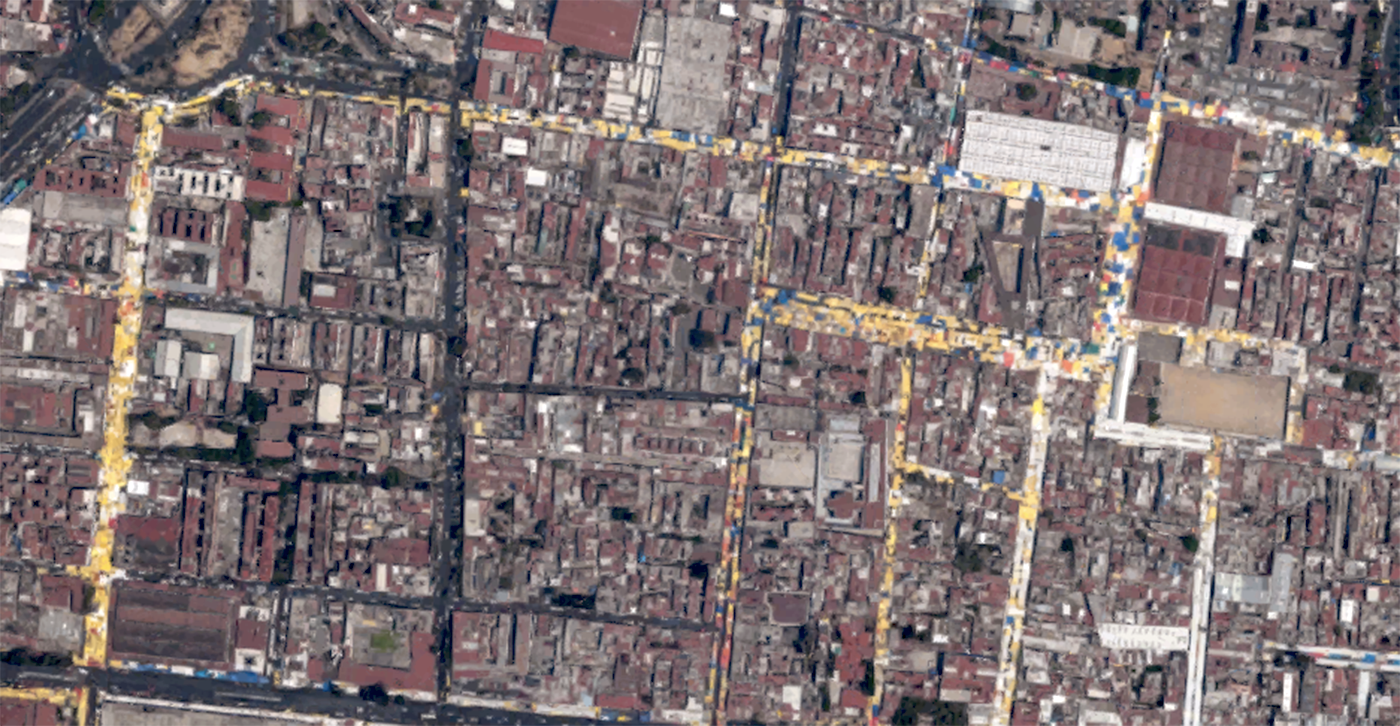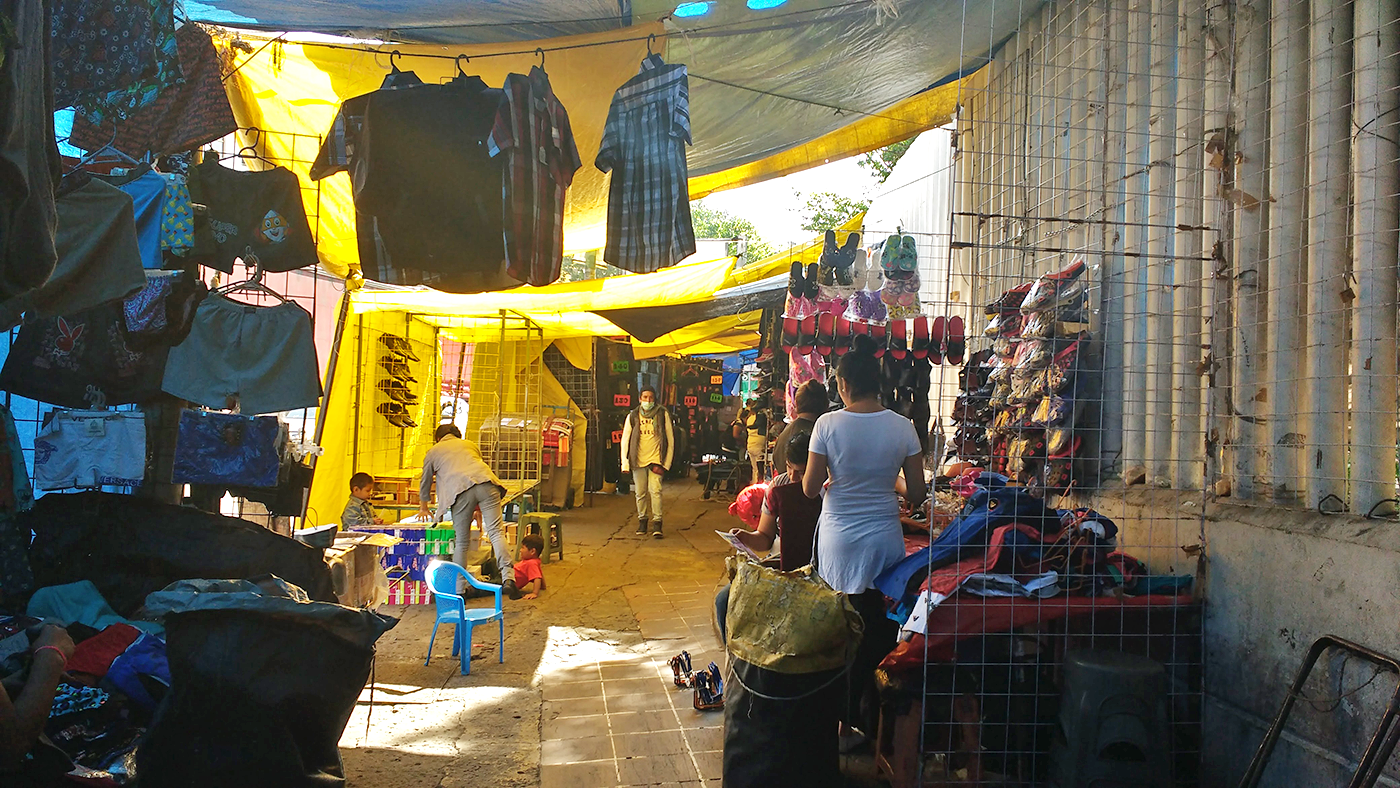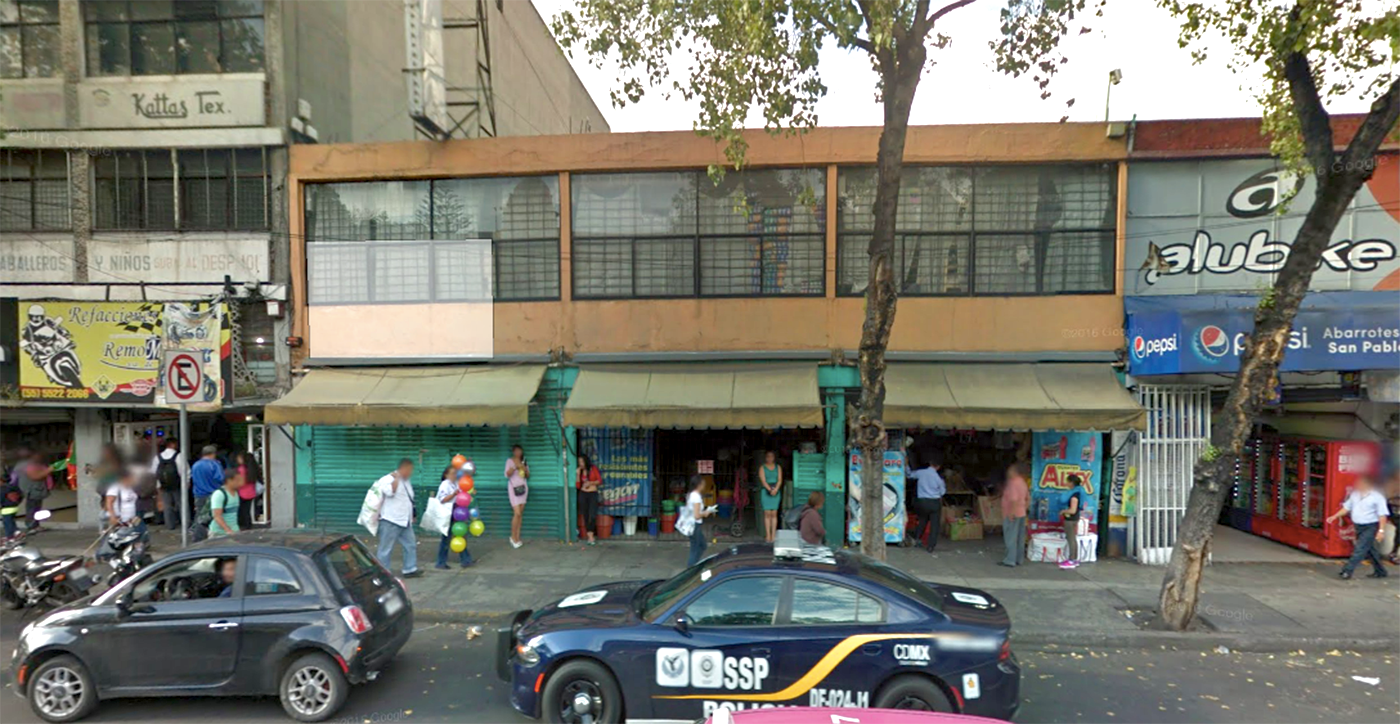I lived in Mexico City for the first half of last year. Walking the streets, riding the metro and lingering in the spaces of this 20-million-person megalopolis for just under five months, I began to understand how different the idea and function of public space is there as compared to North American or European norms.

In front of the Sonora Market, Mexico City. Photo: Devon Willis
Public space in Mexico City almost always serves a commercial function. This is all but uncommon in cities, which have always served as centers of trade. However, while many cities in Canada and Europe have highly controlled commercial activity in the public realm (e.g. on sidewalks, in parks and squares), you can buy just about anything in the streets of Mexico City.
In my first few weeks, I was overwhelmed by the street vendors. Upon exiting a metro station, you often enter a labyrinth of kiosks and stalls, where you can buy anything from socks to DVDs to tacos. It feels a bit like being in IKEA – you need to pass every stall before you reach the street, continuing onto your destination.

The stalls of street vendors in Mexico City are clearly visible from above as yellow, red, and blue dots filling the streets. Image: Google Earth 2017
While it can be relentless, one day as I walked through one such tianguis (the Mexican word for an open-air market), complaining that one could not escape commercial activities, I found myself perusing a table of socks and leaving with a cellphone cover. The thing is, while the presence of ambulantes (street-vendors) throughout the city can be overwhelming, people really do purchase from them. Instead of heading to a high-street as in most of Europe, or a shopping mall in North America, people head for the market, the tianguis, even the metro. One morning, I asked my boyfriend where I could buy bobby pins. I was surprised when instead of naming a store, he responded, “In the metro”. I was skeptical, but later that morning on my way to a meeting, a young woman entered my metro car selling bobby pins (and mini tubes of toothpaste!). True story.
Between my house and the metro, the sidewalk was covered with street-vendors, as well as inside the metro station and even inside the metro, rushing to change cars at each station. They sold snacks, cream for aches and pains and even a book about how to properly raise your children. This commercial activity in the public space is not just cultural and historical, though Mexico City has always been a center of trade, it is also the result of a large number of people having trouble getting formal work and therefore a substantial informal sector. Selling products in the public realm offers them a livelihood, but also turns public spaces effectively into workspaces.

Stalls along San Pablo Street created a semi-enclosed market along the sidewalk. Photo: Devon Willis
When I hear “workplace” I think of an office, a desk and computer, or perhaps shops and restaurants in the service industry. In Mexico the public realm is often a workplace. One day, while walking through the Merced neighbourhood with a tour group from the United States, an oblivious member of the group held up a man who was transporting fruits in a large cart to let our group pass. He gave no apologies to the man, completely unaware that he had just walked into that man’s office and disrupted his workday.
These spaces are often also cared for like one’s office. Early in the morning, street-vendors sweep and wash the area they use for their business. Sometimes the stalls block the circulation of pedestrians, and once I even had to crouch down to keep walking, as two little old women had covered their stands with a tarp, exactly at their height, to create some much-needed shade. They were designing and modifying their workplace.
It can be frustrating to those trying to use the sidewalk to transit from one activity to the next, and while the public realm should remain public and accessible to everyone, these stalls sometimes create spaces to stay, to sit, and to enjoy the city, whether it is to eat a taco with your neighbours, buy your groceries, or chit-chat as you peruse a pile of socks. All this packed into the narrow sidewalk, overflowing onto the street, or in and around the metro.
An Asymmetrical Use of the Public Realm: Being a Woman in Public Space
Unfortunately, the public realm is also a space of unpaid, involuntary work, that is, human trafficking and sexual exploitation. Two streets in particular, Anillo de Circunvalación and San Pablo, situated in la Merced neighbourhood, are notorious for their mix of street vendors, clothing and bicycle shops and sex workers. While I often walked along these two streets, passing through, other young women, standing several meters apart, lingered, waiting. While for me Anillo de Circunvalación was a weekend destination, a place to shop for inexpensive clothing, for these women it is a place of work, work they may have not chosen and probably do not get paid for.

Sex workers lingering on San Pablo Street. Image: Google Streetview 2017
While I was fortunate to move through San Pablo and Circunvalación with the freedom that these women do not have, I did encounter some problems as a woman, by myself, in public space. Usually it began with someone, often a man, trying to sell me something. For example, one day I decided to walk around Coyoacán and sat down in the main square. In the span of a few minutes, a man had come over to me. He was selling small bracelets and, admittedly impatiently, I told him I was not interested. This angered him and he insisted that I listen to his spiel. I explained that I just wanted to quietly sit alone, apologized and repeated that I was not interested. Irate, he told me I was in Coyoacán and if I wanted to be alone I could go home, or back to my own country. He eventually moved on and I was left shaken by his antagonistic response. In the moments after the encounter, I looked around and realized that there were no other women sitting alone in the plaza. It was not late, only 6pm. However, the park was full of small groups, couples, mothers and their children, and some men by themselves, but no women by themselves. While I appreciate that in Mexico people often stay with their family and friends in the public realm, I am used to being able to sit alone in a park or a square without garnering too much attention.
It seems that while women can access public space, their enjoyment of the public realm is limited by concerns over personal safety. I was told I always needed to be on my guard and aware of my surroundings, especially when walking alone and/or at night, as there is a risk of being catcalled, harassed, or even assaulted. One such incident last year made international news when an American journalist living in Mexico City was assaulted in the streets of la Condesa (the neighbourhood I spent my first three months living in). There have been many civil society responses to the systematic violence against women, notably a twitter campaign called #miprimeracoso (“my first harassment”), in which thousands of women shared their first experience of sexual harassment. Also, a group of activists called las Hijas de la Violencia (the Daughters of Violence) raise awareness about violence against women in the streets and public spaces by theatrically calling out aggressors, using a mixture of confetti pistols and punk music.


